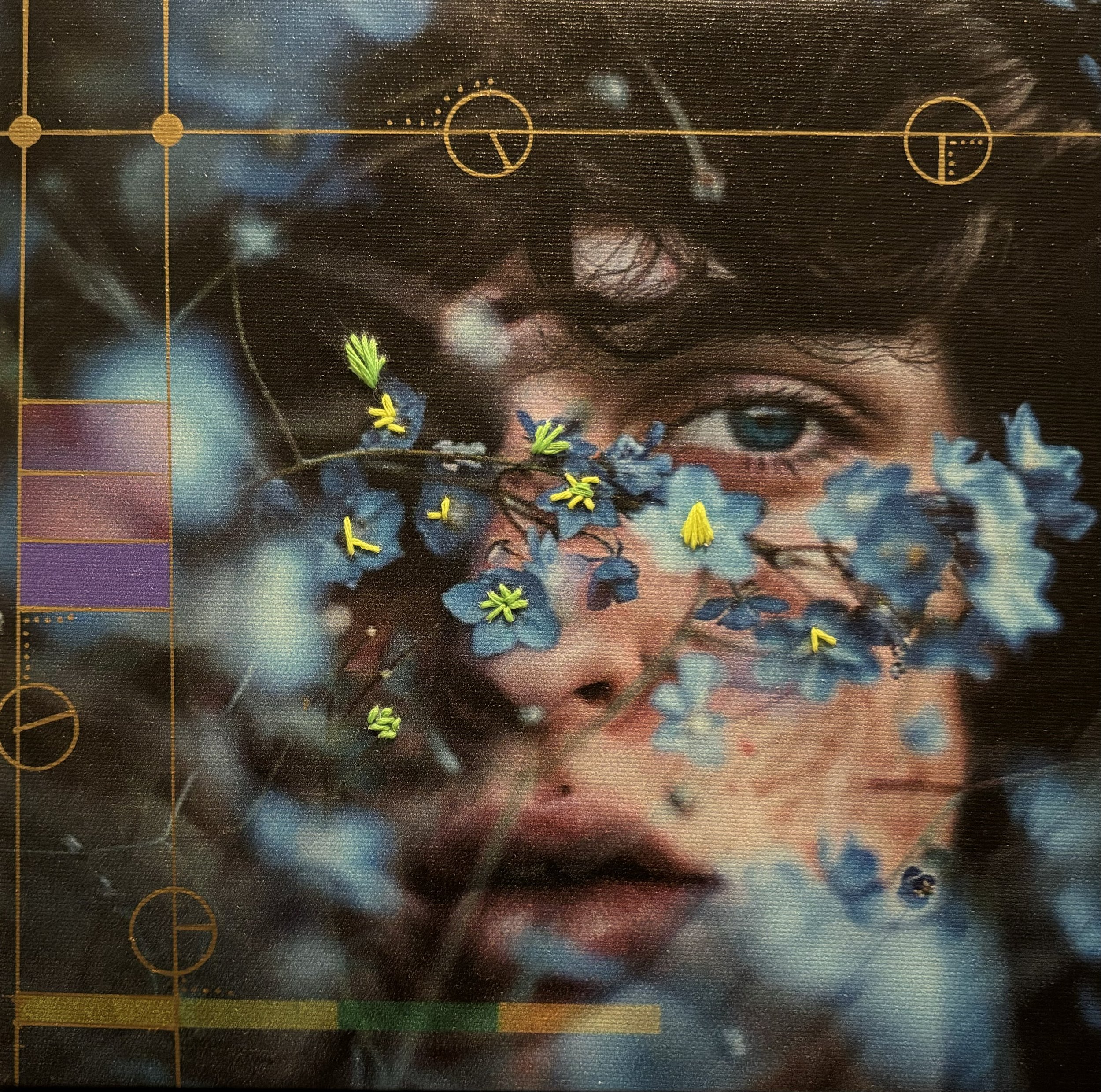Translating the human experience
Artwork by Zelda Cavanaugh
________________________
The meticulously woven elements create a captivating puzzle, inviting viewers to immerse themselves through thoughtful contemplation
What began as a curious experiment with AI-generated imagery gradually unfolded into a deeper exploration of collaboration between human and machine. Working under the name Zelda Cavanaugh, a tribute to my beloved dog, I created a body of work that investigates how artificial intelligence interprets human emotion. What started informally evolved into a creative practice where digital outputs were enhanced by hand-applied embellishments, highlighting the tension and harmony between synthetic systems and human touch. The process remains an ongoing study in perception, authorship, and the evolving language of visual expression.
Informed by the DSM 5 and neuroscience, my work explores how generative AI might interpret and express the human emotional experience. Rather than aiming for precise translation, the process investigates how abstraction can serve as an entry point for machines to approximate emotional nuance. By transforming psychological concepts into visual form, the work becomes an open ended exploration of how technology can participate in the emotional landscape, offering new ways to engage with complexity that often resists language.

Process
the images I create begin with an ecosystem of AI tools combined with DSM-5 criteria for various mental health disorders
these images are then refined in Adobe Illustrator, where extensive stylistic edits are made
once complete, the images are printed on canvases and mounted
hand-sewn elements, primarily using embroidery threads, are then incorporated with various types of needles
my sewing skills were originally developed in the funeral service industry, where the process is known as suturing: a nod to the medical field's preference for Latin terminology
just as a wound requires support to heal, it’s vital that we support one another through life's challenges
seek out your support network for the resilience needed to overcome difficulties, and similarly, offer support to those in your circle who may be struggling, much like the tactile connection my art invites.





